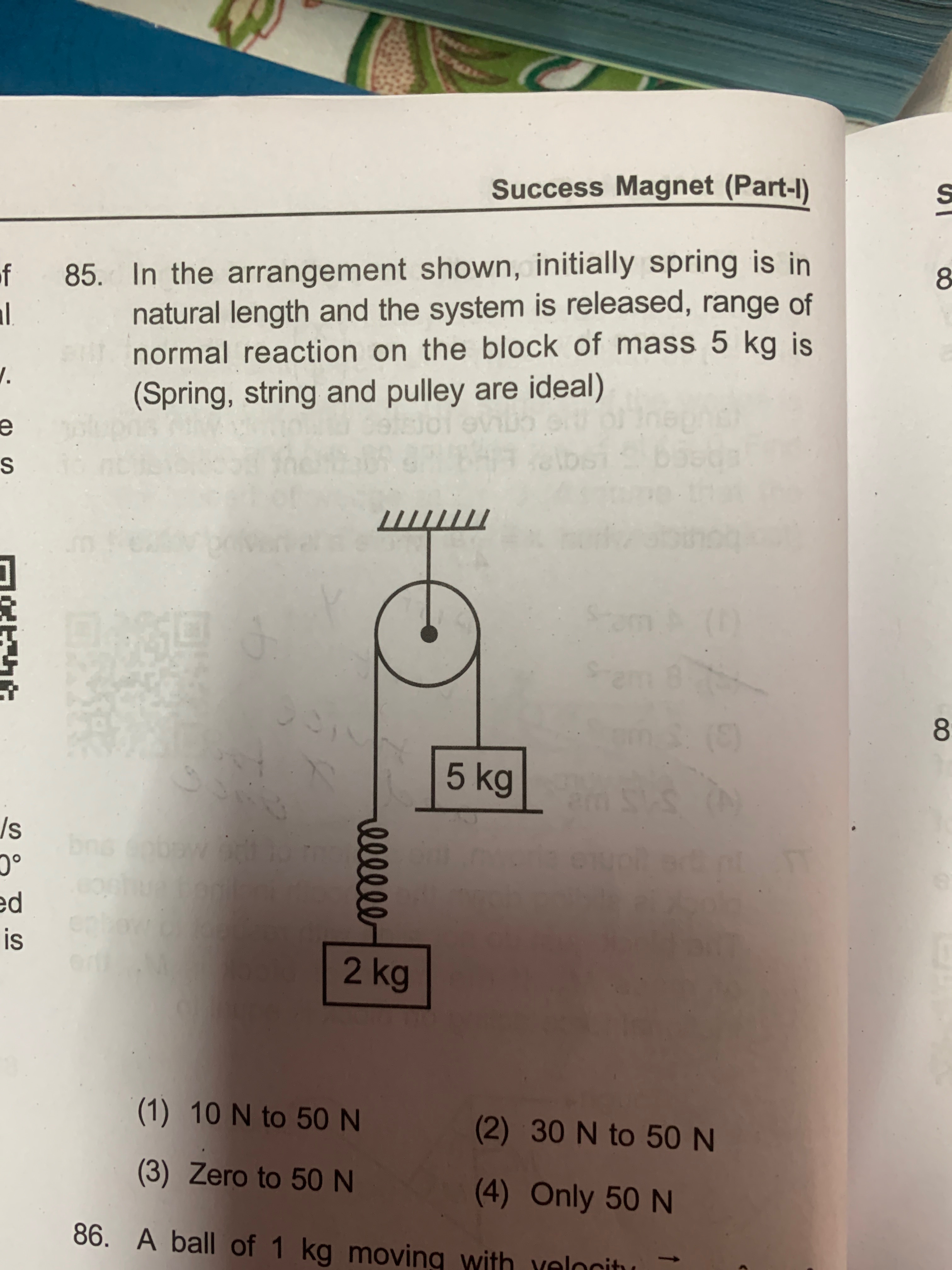Question
Question: In the arrangement shown, initially spring is in natural length and the system is released, range of...
In the arrangement shown, initially spring is in natural length and the system is released, range of normal reaction on the block of mass 5 kg is (Spring, string and pulley are ideal)

10 N to 50 N
30 N to 50 N
Zero to 50 N
Only 50 N
30 N to 50 N
Solution
We note that the 5‐kg block rests on a horizontal (ideal) surface and is connected by a light string that runs over an ideal pulley. One end of the string is attached to the 5‐kg block and the other end goes to a spring (initially unstretched) in series with a 2‐kg mass. Since the pulley is fixed (at the edge of the table) and the string is inextensible, the string joining the 5‑kg block to the pulley is not necessarily horizontal; rather it makes an angle θ with the horizontal. Thus the block suffers a tension force T whose vertical component is T sinθ.
For the block on the table, the vertical forces are:
Normal reaction N (upward)
Weight (5g=50N, downward)
Vertical component of tension: Tsinθ (upward)
Since there is no vertical motion,
N+Tsinθ=50⟹N=50−Tsinθ.Key points:
-
Initial stage: When the system is released, the spring is at its natural length so no force is transmitted through it, meaning T=0. Then N=50N.
-
Later motion: As the 2‐kg mass falls, the spring stretches and develops a tension T that increases gradually. Simultaneously the 5‐kg block moves toward the pulley. In the limit when the block is very close to the pulley the string becomes almost vertical, i.e. sinθ→1.
At this stage the vertical upward force on the block becomes maximum: Tsinθ≈T. The maximum value of T (which can be determined from the dynamics of the 2‐kg–spring system) turns out to be such that the maximum vertical pull on the 5‑kg block is about 20 N (since the 2‐kg weight, when decelerated by the spring, can at most “pull” with a force of the order of its weight). Therefore the minimum normal reaction becomes
Nmin=50−20=30N.Thus the normal reaction on the 5‑kg block will vary between 30 N and 50 N.
